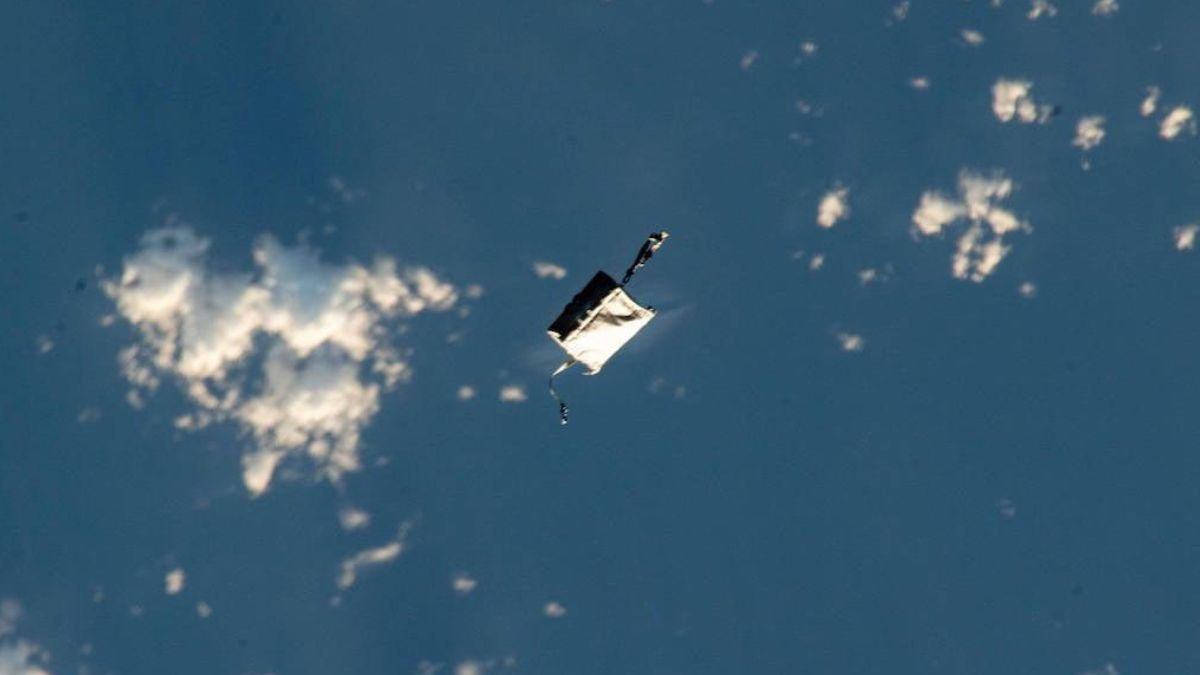A recent spacewalk report posted on the NASA website adds to the growing mountain of space debris orbiting overhead. This time, the object, cataloged by the US Space Force as 58229/1998-067WC, is a “crew lock bag.” The name given to the famous toolbox by the inhabitants of the International Space Station (ISS).
The incident occurred on November 2, when astronauts Jasmin Moghbeli and Loral O’Hara performed a seven-hour extravehicular activity (EVA) to perform repairs on the solar tracking array panel. During the transactions, The bag came loose and literally went into space.
In a separate press conference posted on YouTube last week, ISS Deputy Program Manager Dana Weigel attempted to reassure the planet’s population that the misplaced package currently orbiting Earth at more than 18,000 miles per hour only “contains some tethers and stuff.” worked. tool slots.”
Does the ISS’ lost toolset pose a risk?
Weigel said the items in the missing object were “fairly common” and did not see a “major impact” risk even at an altitude of over 100 kilometers above the Earth’s surface. There is also no risk to the crew because “Mission Control observed the bag’s current orbital trajectory and determined that the risk of ‘re-contact’ with the ISS was low.”
According to the space agency management, there is no need for any intervention because it is in a geostationary orbit and the toolbox is expected to decay in the Earth’s atmosphere in March 2024. Considering its size, The equipment must be completely burned when it reaches an altitude of 113 kilometers above the earth’s surface.
2022 ESA (European Space Agency) astronaut Meganne Christian shared a clip on social media taken directly from Moghbeli’s helmet camera, showing the exact moment when the toolbox escaped into the cosmic abyss. See below.
Is it possible to observe the ISS toolbox in space?
Last seen date: @Astro_Satoshi Floating over Mount Fuji ?? Can ‘Orbital Police’ confirm missing EVA equipment is being tracked? https://t.co/wz4MITmAfM pic.twitter.com/eksfu9fPFw
— Dr Meganne Christian (@astro_meganne) 5 November 2023
The good news for celestial observers who want to see stars, planets and galaxies, as well as a flying instrument set, is that RecordThe object’s brightness is classified as +6 stellar magnitude, which means: You can observe with binoculars, and even with the naked eye at the moment of critical burning.
Since the crew’s locked bag travels from the ISS two to four minutes early, find the space station first (you can use NASA’s Spot the Starion app) and point your optical device forward.
Follow the latest news from the International Space Station (ISS) on TecMundo. If you wish, enjoy discovering everything you need to know before becoming an astronaut.
Source: Tec Mundo
I’m Blaine Morgan, an experienced journalist and writer with over 8 years of experience in the tech industry. My expertise lies in writing about technology news and trends, covering everything from cutting-edge gadgets to emerging software developments. I’ve written for several leading publications including Gadget Onus where I am an author.












